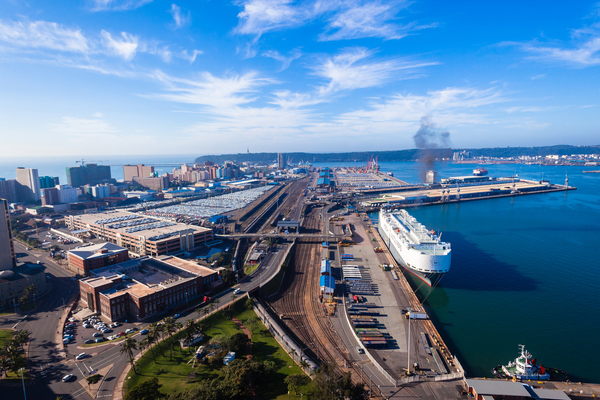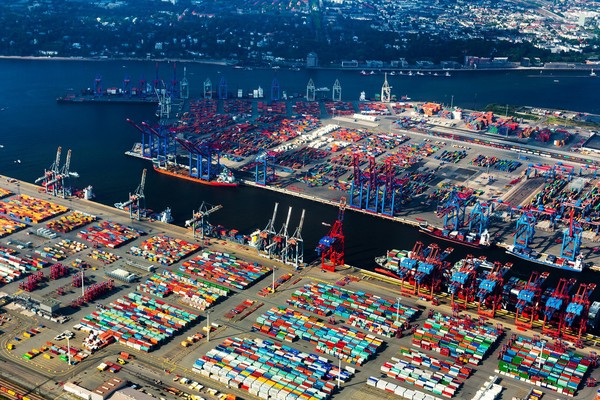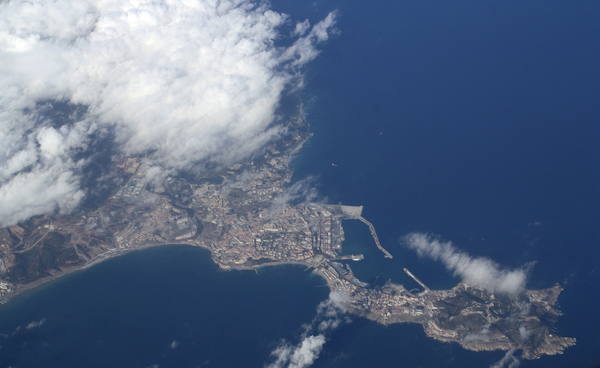Europe & Africa Market Update 5 June 2025
European and African bunker benchmarks have recorded losses in the past session, and congestion in Gibraltar has worsened.
 IMAGE: Aerial view of the Bay of Gibraltar. Getty Images
IMAGE: Aerial view of the Bay of Gibraltar. Getty Images
Changes on the day to 09.00 GMT today:
- VLSFO prices down in Durban ($14/mt), Rotterdam and Gibraltar ($3/mt)
- LSMGO prices down in Gibraltar ($19/mt) and Rotterdam ($5/mt)
- HSFO prices down in Gibraltar ($13/mt), Durban ($5/mt) and Rotterdam ($3/mt)
- Rotterdam B30-VLSFO premium over VLSFO remains unchanged at $233/mt
VLSFO and HSFO prices have declined in Gibraltar in the past session. A steeper fall in the port's HSFO price has widened its Hi5 spread by $10/mt, to $64/mt now. A lower-priced 500-1,500 mt HSFO stem fixed at $457/mt in Gibraltar has contributed to drag the benchmark down. The port's LSMGO price has also dropped, weighed down by a lower-priced 150-500 mt stem fixed at $685/mt.
Similar to last week, prompt bunker availability remains tight in Gibraltar Strait ports, with lead times of 8-9 days advised.
Gibraltar now has 15 vessels awaiting bunkers, up from fewer than 10 vessels reported over the past week, according to shipping agent MH Bland. Weather conditions in Gibraltar are forecast to remain suitable for bunkering operations over the weekend.
Suppliers in Algeciras are still running 2-12 hours behind schedule, according to MH Bland.
Brent
The front-month ICE Brent contract has moved $0.39/bbl lower on the day, to trade at $65.10/bbl at 09.00 GMT.
Upward pressure:
Wildfires in Canada’s energy hub of Alberta has curtailed about 350,000 b/d of crude oil production, according to a Bloomberg report. This news has provided some support to Brent crude’s price.
“Overall, there are blazes that are 10 hectares or larger in size that are within 10km of about 420kb/d [420,000 b/d] of oil production,” ANZ Bank’s senior commodity strategist Daniel Hynes remarked.
Additionally, a decline in US crude stocks has supported oil prices. Commercial US crude oil inventories have decreased by about 4.3 million bbls to touch 436 million bbls for the week ending 30 May, according to data from the US Energy Information Administration (EIA).
A decrease in US crude stockpiles generally signals stronger demand and can support Brent's price.
Downward pressure:
Brent futures have declined following media reports stating that Saudi Arabia plans to significantly increase crude oil output in the upcoming months.
The coalition’s de-facto leader wants to continue with aggressive oil supply hikes to regain market share, Bloomberg reports, adding that it wants to bring back 411,000 b/d of crude oil in August and potentially September.
“Saudi Arabia is said to want to increase output at this level in August and possibly September in an effort to regain lost market share,” Hynes said.
Earlier this week, eight members of the Organization of the Petroleum Exporting Countries and its allies (OPEC+) agreed to collectively increase their supply by 411,000 b/d in July, compared to June’s production levels.
The announcement marked the third month in a row that they plan to expedite the unwinding of their joint 2.2 million b/d output cuts. The group will meet again on 6 July to decide on August production levels.
By Samantha Shaji and Aparupa Mazumder
Please get in touch with comments or additional info to news@engine.online

Contact our Experts
With 50+ traders in 12 offices around the world, our team is available 24/7 to support you in your energy procurement needs.




